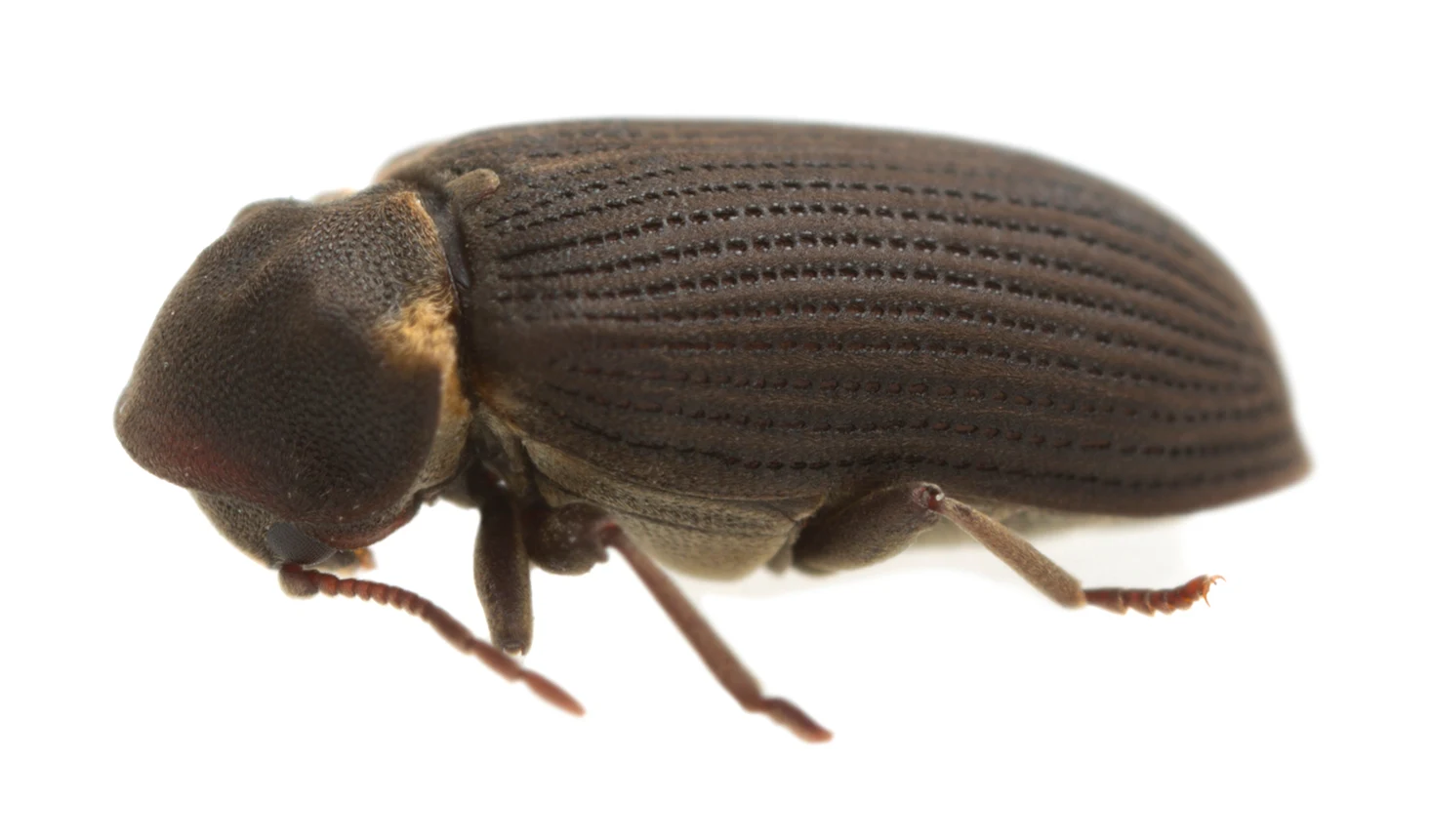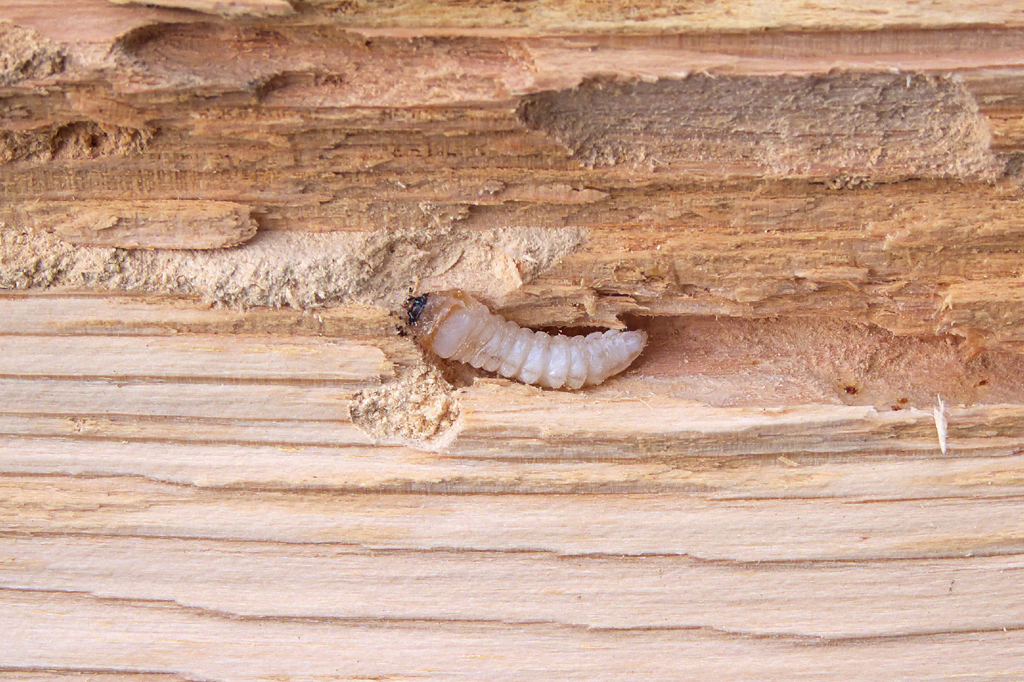
Wood Borer
Common Name:
Woodboring Beetle, Powderpost Beetle, Furniture Beetle, Woodworm
Woodboring Beetle, Powderpost Beetle, Furniture Beetle, Woodworm
Size: 2 mm to 10 mm
Life Span: 1 – 5 years
Wood borers are a group of beetles whose larvae feed on and tunnel through wood, causing significant structural damage. These insects belong to different families, including Anobiidae, Bostrichidae, and Cerambycidae. They are commonly found in homes, furniture, wooden structures, and even trees.
The life cycle of wood borers consists of four stages: egg, larva, pupa, and adult. The most destructive stage is the larval stage, which can last for several years. During this time, the larvae remain hidden inside wood, consuming cellulose and leaving behind a network of tunnels. Over time, this weakens the wood, causing it to crumble or collapse.
Adult wood borers are small beetles with hard shells and long antennae. They lay eggs in cracks, crevices, and unfinished wood surfaces. Once the eggs hatch, the larvae burrow into the wood, making their presence difficult to detect. One of the earliest signs of infestation is the appearance of small, round exit holes on the wood’s surface, accompanied by fine powdery dust (frass).
Wood borers prefer damp, untreated, or poorly ventilated wood. They are often introduced into homes through infested furniture, firewood, or wooden packaging materials. If left unchecked, wood borers can cause serious damage to wooden structures, furniture, and antiques, leading to costly repairs or replacements.
As pest
Wood borers are highly destructive pests that pose a significant threat to wooden structures, furniture, and antiques. Their larvae feed on the internal fibers of wood, creating tunnels and weakening the material from the inside. This damage is often unnoticed until the wood starts crumbling or developing cracks.
One of the most common signs of an infestation is the presence of small, round holes on the surface of wooden objects. These are exit holes created by adult beetles when they emerge after completing their development. Accompanying these holes is a fine, powdery substance called frass, which is the digested wood left behind by the larvae.
Severe infestations can compromise the structural integrity of buildings, making wooden beams, floors, and furniture brittle and prone to breakage. Infested wooden artifacts and antique furniture may lose their value or require expensive restoration.
Unlike termites, wood borers do not consume wood rapidly, but their long life cycle allows them to cause gradual, widespread damage over several years. If not controlled early, a wood borer infestation can spread to multiple wooden items, making eradication difficult and costly.

How to control
Preventing and controlling wood borers requires early detection and a combination of chemical and non-chemical methods. One of the best preventive measures is using well-seasoned, treated, or varnished wood, as borers are less likely to infest finished surfaces. Keeping wooden structures dry and well-ventilated can also help deter infestations since borers prefer damp conditions.
If an infestation is detected, affected wood should be isolated to prevent the spread. Small infestations can sometimes be controlled using wood preservatives or borate-based treatments, which penetrate the wood and kill larvae inside. Freezing small infested furniture pieces for several days can also eliminate borers.
For severe infestations, fumigation is the most effective method. Professional pest control services use gas fumigation to penetrate deep into the wood and eradicate all life stages of the beetle. Another alternative is heat treatment, where infested wood is exposed to high temperatures to kill larvae and eggs.
Regular inspection of wooden furniture, flooring, and beams can help detect an infestation early. Sealing cracks and treating new wooden items before bringing them indoors can prevent future problems. A combination of preventive care and timely intervention is the best approach to protecting wood from borer damage.

